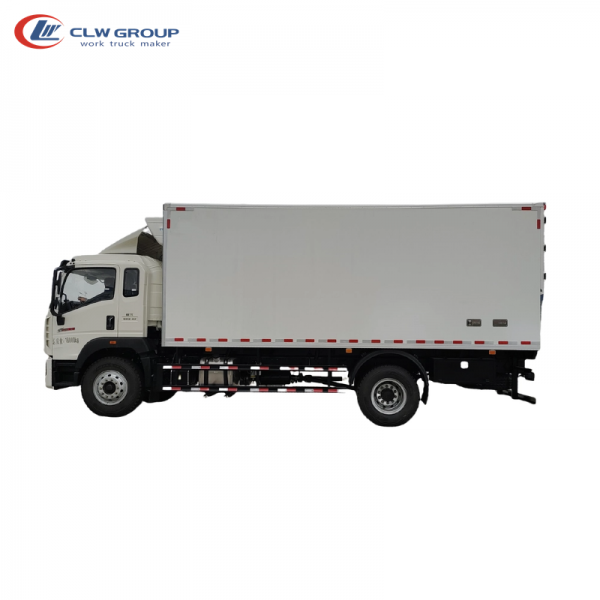Introduction
In today's fast-paced world, businesses are constantly looking for ways to improve efficiency and reduce costs. For companies that rely on work truck trailers to transport goods and materials, route optimization plays a crucial role in achieving these goals. By carefully planning and optimizing the routes that work truck trailers take, businesses can minimize fuel consumption, reduce wear and tear on vehicles, and ensure timely deliveries. In this article, we will explore the importance of work truck trailer route optimization and discuss strategies that businesses can implement to maximize efficiency.
Importance of Route Optimization for Work Truck Trailers
Route optimization is essential for work truck trailers for several reasons. First and foremost, optimizing routes helps businesses save time and money. By planning the most efficient routes, companies can reduce fuel consumption, vehicle maintenance costs, and labor expenses. Additionally, efficient route planning helps businesses meet delivery deadlines, improve customer satisfaction, and ultimately increase profitability.
Furthermore, route optimization plays a significant role in reducing carbon emissions and minimizing the environmental impact of transportation operations. By reducing the number of miles traveled and optimizing routes to avoid traffic congestion, businesses can lower their carbon footprint and contribute to a more sustainable future.
Challenges in Work Truck Trailer Route Optimization
While the benefits of route optimization for work truck trailers are clear, there are several challenges that businesses may face when trying to implement these strategies. One of the main challenges is the complexity of route planning, especially for companies with large fleets and multiple delivery locations. Balancing Tanker truck emissions regulations as delivery windows, traffic conditions, and vehicle capacities can be a daunting task for logistics managers.
Another challenge is the dynamic nature of transportation operations. Factors such as weather conditions, road closures, and unexpected delays can disrupt planned routes and lead to inefficiencies. To address these challenges, businesses need to adopt flexible and adaptive route optimization strategies that can quickly respond to changing conditions.
Strategies for Work Truck Trailer Route Optimization
To overcome the challenges associated with work truck trailer route optimization, businesses can implement a variety of strategies. These strategies are designed to streamline the route planning process, minimize costs, and improve overall efficiency. Below are some key strategies that businesses can consider:
1. Utilize Route Optimization Software: One of the most effective ways to optimize work truck trailer routes is to use route optimization software. These advanced tools leverage algorithms to calculate the most efficient routes based on factors such as distance, traffic conditions, delivery windows, and vehicle capacities. Route optimization software can significantly reduce planning time, improve route accuracy, and help businesses make informed decisions.
2. Implement Real-Time Tracking Systems: Real-time tracking systems allow businesses to monitor the location of work truck trailers in real-time and receive updates on delivery status. By combining route optimization software with real-time tracking systems, businesses can adjust routes on the fly, reroute vehicles to avoid delays, and provide customers with accurate delivery estimates.
3. Consider Time Windows and Delivery Prioritization: When planning work truck trailer routes, businesses should take into account delivery time windows and prioritize deliveries based on urgency. By scheduling deliveries during off-peak hours and grouping deliveries by location, businesses can optimize routes and minimize waiting times.
4. Optimize Vehicle Load Capacities: Maximizing vehicle load capacities is another key strategy for route optimization. By efficiently allocating goods and materials to work truck trailers based on weight and volume, businesses can reduce the number of trips required to complete deliveries and lower transportation costs.
5. Monitor and Analyze Performance Metrics: To continuously improve route optimization strategies, businesses should monitor key performance metrics such as fuel consumption, delivery times, and vehicle utilization rates. By analyzing these metrics, businesses can identify areas for improvement, fine-tune route optimization algorithms, and enhance overall efficiency.
Case Study: Optimizing Work Truck Trailer Routes for a Construction Company
To illustrate the impact of route optimization on work truck trailer operations, let's consider a case study of a construction company that specializes in building materials delivery. The company operates a fleet of work truck trailers to transport materials to construction sites across a metropolitan area. To improve efficiency and reduce costs, the company decides to implement route optimization strategies using advanced software and real-time tracking systems.

Initially, the company faces challenges with route planning, as manual methods lead to inefficient routes, delays, and increased fuel consumption. By adopting route optimization software, the company can generate optimized routes that consider factors such as traffic conditions, delivery windows, and vehicle capacities. Real-time tracking systems enable the company to monitor work truck trailers in real-time, adjust routes to avoid traffic congestion, and provide accurate delivery updates to customers.
As a result of implementing route optimization strategies, the construction company experiences several benefits. Fuel consumption is reduced by 15% due to optimized routes, leading to cost savings and lower carbon emissions. Delivery times improve by 20%, enhancing customer satisfaction and loyalty. Additionally, vehicle maintenance costs decrease as work truck trailers travel more efficiently and experience less wear and tear.
Conclusion
In conclusion, work truck trailer route optimization is a critical component of efficient transportation operations for businesses that rely on fleet vehicles for deliveries. By implementing route optimization strategies such as utilizing software, real-time tracking systems, and optimizing vehicle load capacities, businesses can streamline route planning, reduce costs, and improve overall efficiency. As demonstrated in the case study, the benefits of route optimization extend beyond cost savings to include enhanced customer satisfaction and environmental sustainability. By prioritizing route optimization, businesses can maximize efficiency, minimize environmental impact, and achieve long-term success in an increasingly competitive market.
